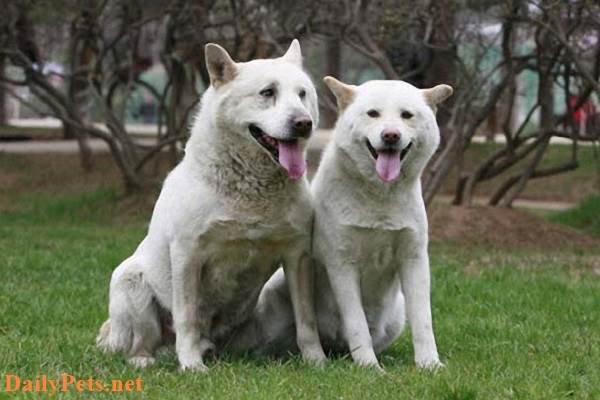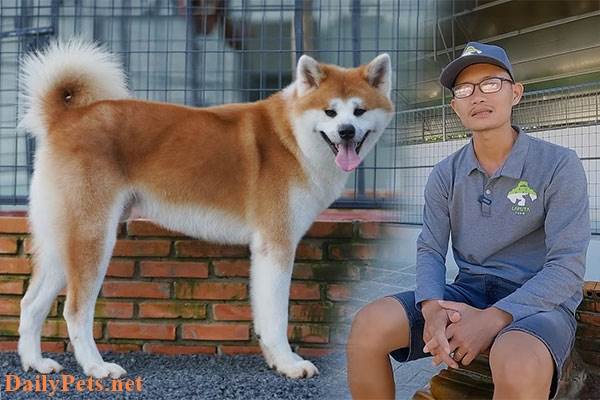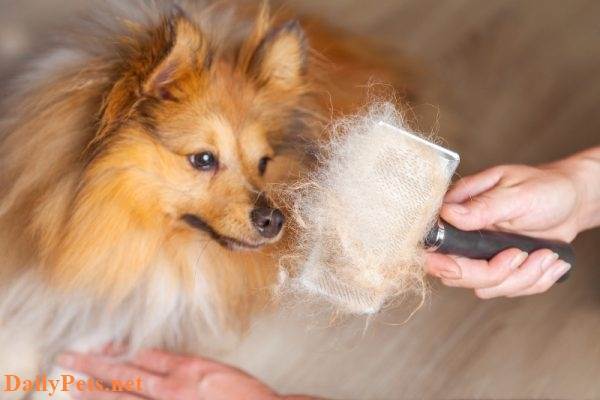There is a theory that the Australian Dingo dog is a natural wild dog that has lived in Australia for centuries. They are a cross between a wolf and a domestic dog.
However, scientists still cannot come to a consensus on their origin.
Origin of the Australian Dingo
The Australian Dingo dog breed is a wild animal brought to Australia by primitive people 4000 years ago. This breed is believed to be the ancestor of more than 600 current dog breeds worldwide. Captain William Dampier was the first to write about this wild dog in 1699. At that time, they were raised by the Aborigines of Australia as a backup food source in times of need.
Descended from the Middle Eastern and Southeast Asian wild dogs, the Australian Dingo dog gradually became feral and returned to the wild. Europeans introduced sheep and rabbits into Australia, so the number of Australian Dingo dogs quickly increased.
The Australian Dingo dog’s selection of livestock as the main food source has caused animosity between them and humans. The brutal human intervention in Australia’s once well-balanced ecosystem has been blamed on the Australian Dingo dogs.
Today, only a few people pay attention to this dog and find ways to research to preserve and preserve them as native species. The Australian Indigenous Dog Training Association, based in New South Wales, has raised and trained several Australian Dingoes. These dogs can be tamed back fairly easily if raised from a young age, but they still retain some of the wild dog’s qualities, such as hiding and being very cautious.

Australian Dingo dog.
In many states in Australia, Australian Dingoes are still considered dangerous and are not allowed in the home. Some other states allow it but with very strict rules. The Australian federal government classifies the Australian Dingo as a wild animal and bans its export, except to nature reserves or zoos. Therefore, it is very rare to see Australian Dingo outside of Australia.
Australian Dingo Dog Appearance
Australian Dingo dog height from 19 to 23 inches (48-58.5 cm); weigh between 50 and 70 pounds (23-32 kg). However, there have been recorded cases of Australian Dingoes weighing up to 120 pounds (55 kg), which is rare.
Australian Dingo wild dogs have rather large eyes, ranging from yellow to orange. The small, slightly rounded ears are extremely agile, energetic, and naturally erect.
Australian Dingo dog’s tail is long, well-proportioned, and slightly ruffled; the back body is stocky and muscular; the coat is thick and soft; thickness and length vary according to the climate of each season. The most common color of the Australian Dingo dog’s coat is bright yellow, but individuals can be found in pale yellow, black or white, and sometimes brindle, albino colors. All purebred Australian Dingo dogs must have white markings on the paws and tip of the tail.
Australian Dingo Dog Personality
The Australian Dingo dog has never been considered fully domesticated. The isolated living environment and lack of human intervention can explain this. This breed is difficult to teach and not suitable for young children.
Training Australian Dingo dogs requires patience and gentleness. Australian Dingo dogs can only be pets if you catch puppies under 6 weeks old. Then they can teach and become friendly with humans. After 10 weeks of age, there should be no intention of taming them.
If trained properly, the Australian Dingo dog can become a unique pet with agility and other talents such as climbing …
Like their ancestors, the Indian plains wolf, Australian Dingoes give birth to only one litter yearly. Another difference in Australian Dingo is that they only have 1 mate. Usually, Australian Dingo puppies are selected as hollows of trees, carefully protected around, and shielded in front of them. Even so, they can still become delicious prey for snakes.
Australian Dingo’s living habits are similar to wolves; the family often calls each other to gather before each hunt. This dog has a very strong herd instinct, always cooperating in hunting.
Their habit is to organize hunting at night. Australian Dingoes can be hunted alone or with the whole family. One barrier to Australian Dingo is water. They usually do not like to swim but only wade in shallow water. Australian Dingoes often avoid human contact.
To survive in nature, Australian Dingo learned the ability to pretend to be dead very skillfully. They are very rarely aggressive. Australian Dingo’s breeding season is around May-June every year.
Currently, Australian Dingo puppies are only traded within Australia, not for export. However, this policy will likely change shortly as this breed’s lovers are campaigning for a program to introduce this special breed to the world widely.
Australian Dingo dog’s living conditions
Australian Dingo cannot be kept in apartment conditions. Because it is a wild animal, if you intend to keep it, you should not chain them in the backyard. It is necessary to have a fence around the house garden.
Australian Dingo dogs need a lot of space and exercise. When taking them out, do not let them off the leash. Can withstand hot weather. The Australian Dingo is an animal with strong wild instincts and a great need for activity. They can live up to 20 years.
The Australian Dingo dog has a waterproof coat and can take care of its coat. Australian Dingoes do not have a typical dog odor.





